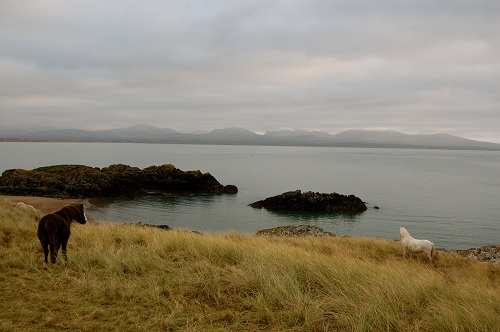When discussed, individuals often jump between the moralities of livestock husbandry, the inevitable death of animals, to the justification for consumption. More often than not, one will deny to comment and move on with their business, choosing explicitly not to get involved given the complexity of the debate.
What many fail to recognize, is that around the globe we are all affected by the hidden consequences of excessive animal farming. The world’s most vibrant rainforest, the Amazon, located in Northern Brazil, has seen trauma for nearly the last six decades to generate land for animal agriculture. The disturbance to the environment is a result of widespread deforestation, a consequence of unregulated commercial clearing by transnational companies. In regions within the area of disturbance, lives are immensely impacted, but the repercussions these animal agriculture events have is a global one. As more trees and ultimately ecosystems are destroyed, there is a wider disruption of global temperatures resulting in more extreme weather such as hotter summers and colder winters. Unfortunately, trees have become a target of human consumption resulting in environmental misuse. This is a dangerous game as trees are critical to our health. Trees cast shadows that keep the soil moist and mineral-ridden contributing to an abundance of resources for other plants and animals. Of the greatest importance, only plants are capable of photosynthesis, which involves the conversion of carbon dioxide and water into sugar and oxygen necessary for human survival on earth. However, the natural balance of atmospheric gases is disrupted by animal agriculture due to the generation of abundant greenhouse gases. These gases are naturally occurring in the atmosphere but as a consequence of animal agriculture, fossil fuels are burned causing a disruption of the natural amount of greenhouse gases. As greenhouse gases are heat-trapping this imbalance interferes with the heat attempting to pass through the atmosphere, resulting in rising global temperatures. It is imperative that the effects of greenhouse gases in the atmosphere is addressed due to the impact on the global ecosystem. For example, the Awá tribe of the Amazon has been driven to near extinction; their population has dwindled to only 355, a direct result of aggressive livestock farmers and illegal loggers who were confrontational on Awá tribal lands. In an emotional interview with The Guardian, Karapiru, a member of the tribe who lived through a massacre that killed his entire family, spoke extensively regarding his encounters with hostile livestock farmers. Sadly, there is continued abuse of native lands and peoples by animal agriculture and the businesses involved. This unchecked exploitation relies heavily on the continued ignorance of a society that shields the dastardly truths and the impact around the globe.
In the Southeastern US, North Carolina leads the country in pork production. The number of humans in the state, ten million, is nearly equal to the roughly nine million pigs bred in the state. Located in the South-East of the state, lies Duplin County. The county is infamous for its amount of livestock. But it is not very clear that another problem lies in the area. During a 2014 study completed by an epidemiologist working at the University of North Carolina, it was found that there was a completely unfair proportion of industrial hog factories in proximity to African-American, Hispanic, and Native American communities. For these communities, waste has changed their daily living, resulting in a list of respiratory illnesses and an acute rise of blood pressure which can lead to diabetes. The sheer amount of industrial pig farms in North Carolina is enough to make you shudder, but what makes it even worse are these effects on people. In the extreme case, Rene Miller, a long-time resident in Duplin County has seen the effects of the hog industry through the deaths of her entire family. Her family graveyard sits on a field fifty yards from an extensive spray machine that releases liquefied pig waste when the waste lagoon is at capacity. Disgustingly, behind her house, there often lie boxes of dead hogs that attract numerous types of insects and decomposers. So the effects of animal agriculture are not a secret for these individuals, and we need to talk about it.
For example, in the US alone, 41% of their 2.3 billion acre landmass, 800 million acres is used for feeding and housing livestock. Through continued animal agriculture, freshwater, land, and the quality of global oceans are at risk. It is said that a single cow harvested for milk will drink up to fifty gallons of water a day, possibly doubling their intake during hot weather, and for a single pound of beef approximately 2400 gallons of water is needed. Additionally, the agricultural growth of animals raised in the US contributes to pollution on a global scale. The entirety of the livestock farming industry produces more excrement than the entire human populace in the US. You may think that there are animal sewage processing plants with the number of animals that are bred every year, but more often than not, animal waste ends up in waste lagoons or sprayed across vast fields close to local communities. Inevitably, this leads to toxic airborne chemicals and neurochemical disease within humans living nearby. Although companies are loath to mention such things, they often choose to keep quiet, which makes it even more difficult for us to get involved in this industry that affects our lives.
The truth regarding animal agriculture is that it is not just a global problem, and it shouldn’t be hidden. Rather everyone should be personally committed to changing the landscape of animal agriculture. It is truly unjust to see how animal agriculture can alter some people’s lives and how far we must go before the consumption of animals stops affecting every part of society.



